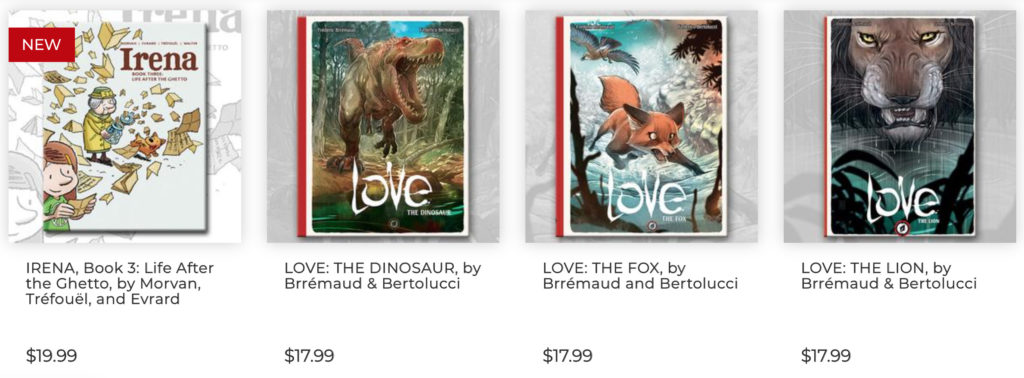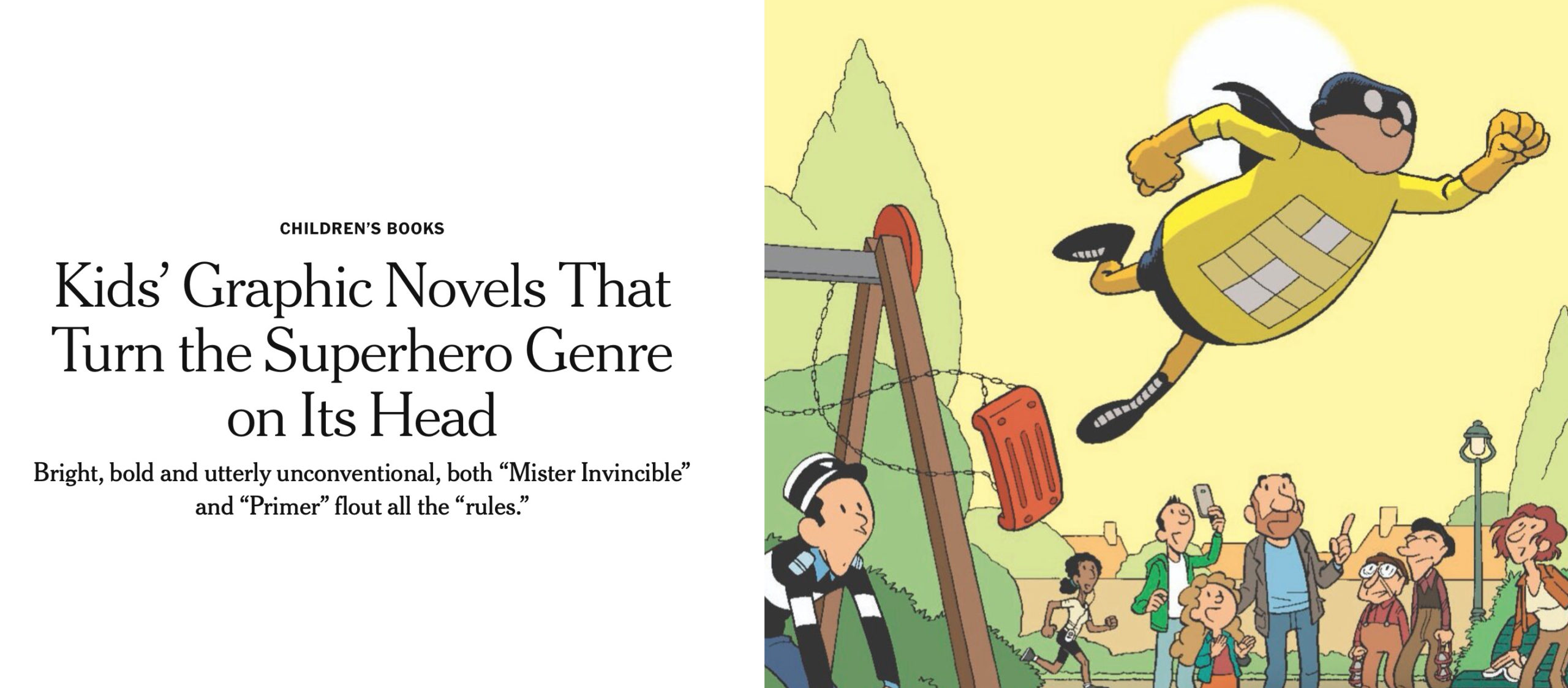Bright, bold and utterly unconventional, both “Mister Invincible” and “Primer” flout all the “rules.”
By Gene Luen Yang Published Oct. 31, 2020 Updated Nov. 6, 2020
When I was a kid, my local comic shop was in a strip mall about 10 minutes away from my home. It was one of my favorite places in the world. For 60 cents, I could buy a comic book — a ticket to a universe populated by modern-day gods.
These days, the modern-day gods of my youth are more ubiquitous than ever. Superheroes are on our T-shirts, in our toy bins and on all our screens. Graphic novels (i.e., thick comic books) are similarly ubiquitous. During the first week of September 2020, the latest volume of Dav Pilkey’s “Dog Man” outsold every other book of any kind in America. In all their success, superheroes and graphic novels seem to have left in the dust local comic shops and the monthly comics they sell.
These two graphic novels may illuminate the path forward.
PRIMER: A Superhero Graphic Novel (DC Comics, 160 pp., $9.99; ages 8 to 12), written by Jennifer Muro and Thomas Krajewski and illustrated by Gretel Lusky, is a spirited new offering from DC Comics, one of America’s oldest comics publishers. Its young protagonist, Ashley Rayburn, lives in the same reality as Wonder Woman, Superman and Batman.
Ashley has superpowers that she accesses through a set of high-tech body paints. Different colors give her different powers. Red increases her strength. Purple makes her invulnerable. With yellow, she can shoot fireballs from her fingers.
Much of Ashley’s story feels familiar. It begins with her bouncing from one foster home to another, an echo of Billy Batson, the alter ego of Shazam. Like Raven of the Teen Titans, Ashley has a villainous father. During battles, Ashley is as devastating with her quips as Spider-Man.
But Ashley doesn’t look like her more famous colleagues in the DC Universe. She’s a 13-year-old girl who is drawn to resemble a 13-year-old girl, rather than a miniature Amazon warrior.
Lusky’s bright, friendly art owes as much to Saturday morning cartoons as it does to classic superhero comics. Her pages brim with playful energy. Her characters and their emotions bounce from one colorful panel to another.
Muro and Krajewski’s writing sparkles whenever Ashley hangs out with Kitch, her offbeat foster father. Ashley and Kitch start off their relationship with jokes. Eventually, their shared sense of humor develops into a genuine love for each other. Muro and Krajewski’s handling of Yuka, Ashley’s scientist foster mother, is less successful. Ashley and Yuka both love sports, but because their commonality never pushes into deeper territory it feels forced. One hopes their relationship will get more attention in future volumes.
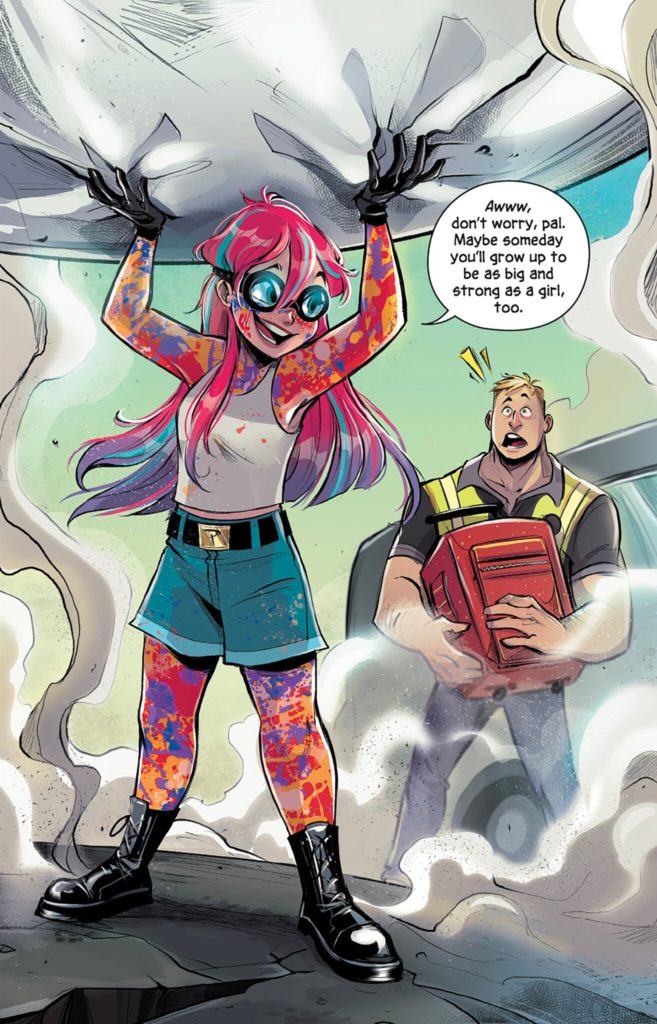
What truly makes “Primer” stand out is Ashley’s, and her creators’, love of art, which shines through every page. Seeing her put on her superpowered paints fills me with the same feeling of possibility I had when I first realized that comic books — those tickets to another universe — were mere drawings on paper. I knew how to draw on paper. Ashley uses lines, swirls and splashes of color to interact with her world in a whole new way. Every one of her readers can do the same.
Muro, Krajewski and Lusky mix beloved superhero tropes with the relatability of popular middle grade graphic memoirs like Raina Telgemeier’s “Smile” and Shannon Hale and LeUyen Pham’s “Real Friends.” Readers uninterested in Batman’s monthly exploits might be enticed to their local comic shop by “Primer.”
MISTER INVINCIBLE: Local Hero (Magnetic Press, 96 pp., $15.99; ages 9 to 12), by Pascal Jousselin, made quite a splash when it was released in France in 2013. Magnetic Press recently translated it for the American market, and this year it won the Best Middle Grade Comic award at the Bologna Children’s Book Fair.
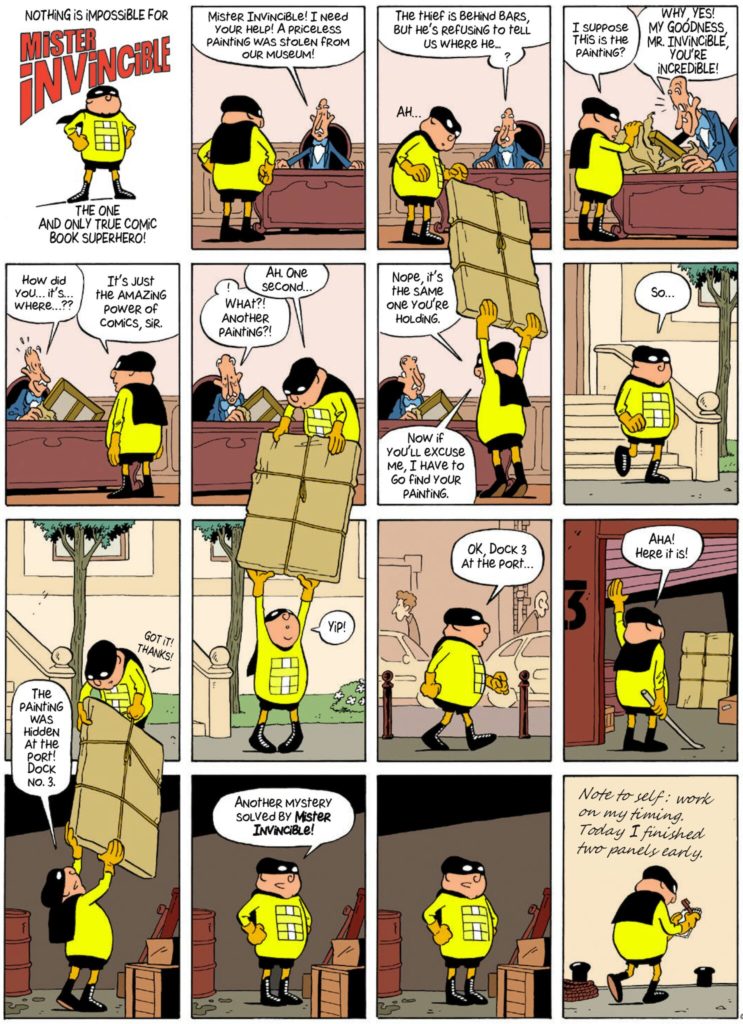
The title character turns the superhero genre on its head. Mister Invincible might wear a mask and cape, but with his potbelly and diminutive stature he’s built more like a loutish uncle from a comic strip. His power isn’t superstrength or the ability to fly. It’s his awareness that he’s in a comic book.
More than that, he understands how the comics medium works. He can poke his head past the borders of his current panel to see into the future or the past. He can pass objects and even himself from one panel to another, moving through time and space. It’s as if Jousselin wrote a checklist of the medium’s rules, then set about having his potbellied hero defy every one of them.
Most comic book aficionados have seen this sort of formalist play before. Scott McCloud’s “Understanding Comics” reprints a Matt Feazell strip where the stick figure protagonist crosses panel borders to borrow money from his future self. Jousselin pushes the gimmick so far, however, that it becomes an exploration of what makes a comic book a comic book. Each escapade is more inventive than the last. Mister Invincible doesn’t just fight villains. He shows us why comics delight us.
On the very first page, Jousselin announces that Mister Invincible is “the One and Only True Comic Book Superhero.” Pretentious, but true. Unlike other costumed crusaders, Mister Invincible can’t ever make the leap to the screen. His powers and his appeal are too firmly rooted in comics.
For their climactic battle, Mister Invincible and a ragtag league of misfit heroes take on an enemy who has already defeated Cricket Boy, the Pipistrelle and Rapidus the Lightning Guy — stand-ins for Spider-Man, Batman and the Flash. Mister Invincible’s team ultimately saves the day not with cosmic punches or fancy utility belts but by knowing just how fun it is to exist in panels on a printed page.
Perhaps that is the lesson Mister Invincible teaches us longtime fans. The future of comic books lies not in ever flashier superpowers but in the wonders of the medium itself.
Gene Luen Yang is the author, most recently, of “Superman Smashes the Klan.”
More Children’s Books from Magnetic Press
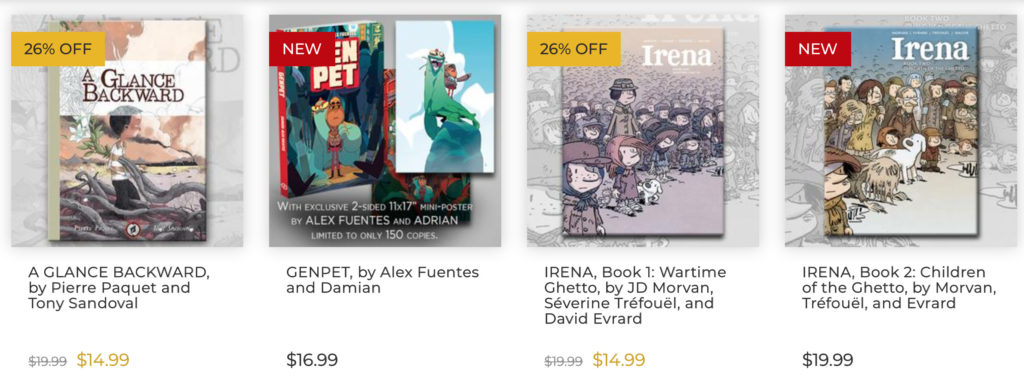
Visit Store.Magnetic-Press.Com Now!
